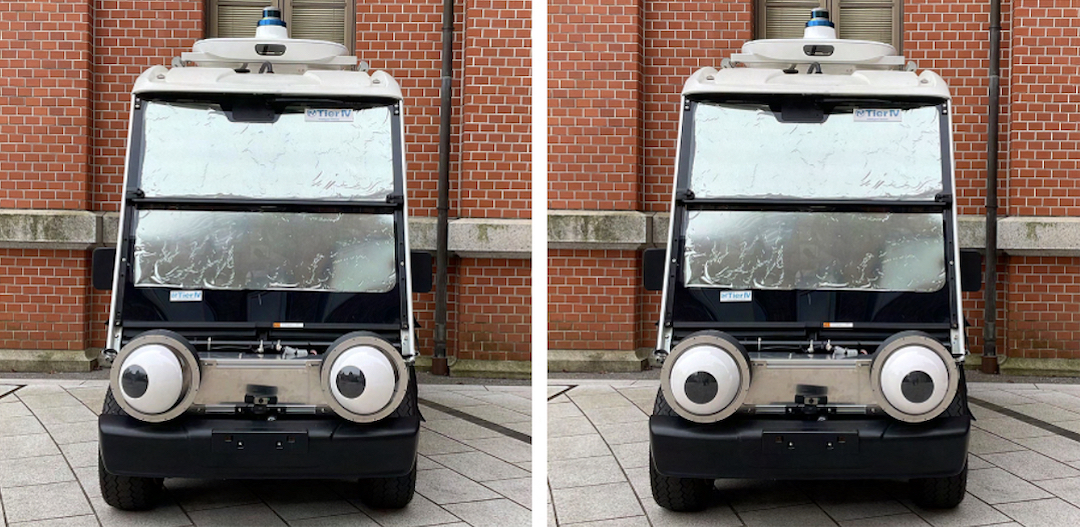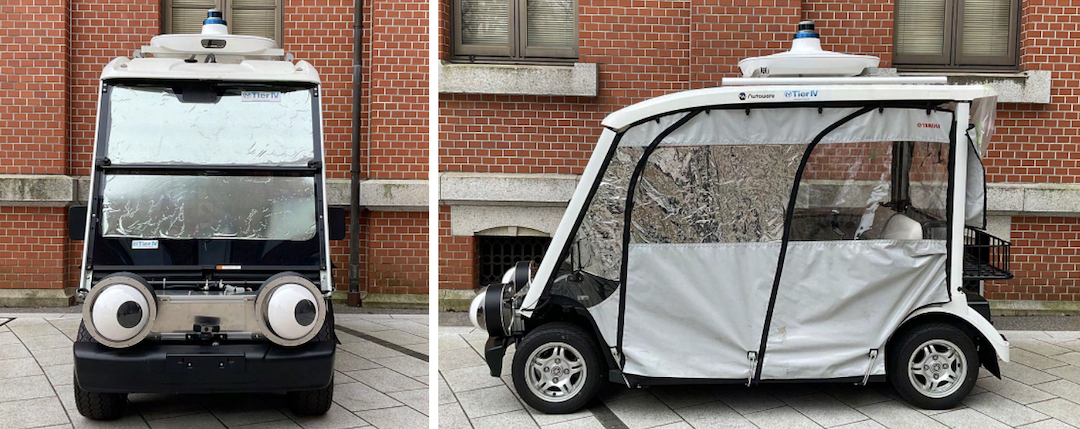Put Googly Eyes On Self-Driving Cars To Bring Down Accidents, Research Suggests
By Alexa Heah, 21 Sep 2022

As the world speeds to a future of autonomous vehicles, concerns have been raised about the safety of self-driving cars. Most notably, Tesla’s system capabilities have hit a snag with regulators, who aren’t convinced of the brand’s ‘autopilot’ mode.
In a new study, researchers from the University of Tokyo have an intriguing proposition to make self-driving vehicles on the roads safer, and it’s pretty outlandish: adding robotic googly eyes.
Simulating the experience via virtual reality, the scientists tasked participants with deciding if to cross the road in front of an oncoming vehicle. Surprisingly, when the car was fitted with robotic eyes—whether trained on the pedestrian or looking away—the subjects made better choices.
“There is not enough investigation into the interaction between self-driving cars and the people around them, such as pedestrians. So, we need more investigation and effort into such interactions to bring safety and assurance to society,” explained Professor Takeo Igarashi.
With autonomous vehicles, those in the front seat turn from fully participating drivers to mere passengers and may not pay as much attention to the road ahead without the need to operate or navigate the car.
As such, it may prove difficult for pedestrians crossing the road to decipher if a driver or car has spotted them, lacking the usual eye contact or hand wave we’ve grown accustomed to with human drivers.

Enter the cartoonish, remote-controlled robotic eyes. With this fixture, dubbed the “gazing car,” both male and female participants made fewer errors when crossing the road, ultimately proving it resulted in safer crossing for everyone.
Though it was noted that the car’s eyes didn’t make much of a difference for men in safe situations (i.e., choosing to cross the road when the car was about to stop), women’s decisions hardly changed in unsafe scenarios.
There were mixed reactions to the googly eyes, with some finding them cute and others thinking they were creepy. Male participants reported that they felt a sense of danger when the vehicle’s eyes looked away, and females said feeling safer when directly spotted by the car.
Of course, the study’s findings are limited by the small number of participants enacting just one scenario. Plus, our decisions in real life may not line up with how we respond to a virtual reality simulation.
Despite that, the team feels that if the eye fixtures can indeed reduce traffic accidents and add to the safety of self-driving vehicles, it should become a serious consideration for manufacturers going forward.
“In the future, we would like to develop automatic control of the robotic eyes connected to the self-driving AI, which could accommodate different situations,” said Project Lecturer Chia-Ming Chang.
“I hope this research encourages other groups to try similar ideas, anything that facilitates better interaction between self-driving cars and pedestrians, which ultimately saves people’s lives,” he added.
[via ScienceBlog and University of Tokyo, images via Chang et al. 2022, University of Tokyo]





